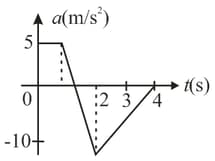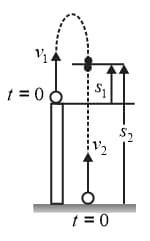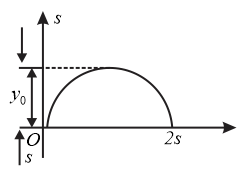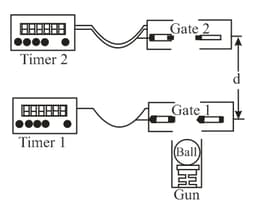A police jeep is chasing a culprit going on a motorbike. The motorbike crosses a turning at a speed of . The jeep follows it at a speed of , crossing the turning later than the bike. Assuming that they travel at constant speeds, how far from the turning will the jeep catch up with the bike? (In )

Important Questions on Kinematics I
A particle moves vertically with an upward initial speed . If its acceleration varies with time as shown in graph in figure, find the velocity of the particle at .

Two bodies and are projected simultaneously with velocities and , respectively. The body is projected vertically up from the top of a cliff of height and the body is projected vertically up from the bottom of the cliff. If the bodies meet, find the time (in ) of meeting of the bodies.

A particle moves rectilinearly possessing a parabolic graph. Find the average velocity of the particle over a time interval from to .

A particle moves in a straight line. Its position (in ) as function of time is given by . What is the average velocity in time interval to in ? (Where and are constants and , )
| Pair | Initial position | Final position |
Find the sum of magnitudes of displacement in the pairs which give negative displacement in .
The figure shows a method for measuring the acceleration due to gravity. The ball is projected upward by a gun. The ball passes electronic "gates" and as it rises and again as it falls. Each gate is connected to a separate timer. The first passage of the ball through each gate starts the corresponding timer, and the second passage through the same gate stops the timer. The time intervals and are thus measured. The vertical distance between the two gates is . If , , , find the measured value of acceleration due to gravity . (in ).

